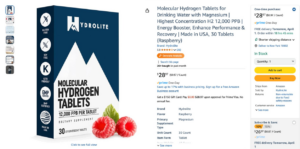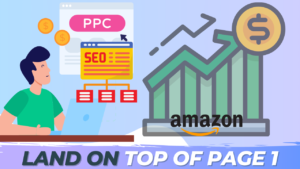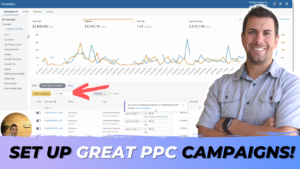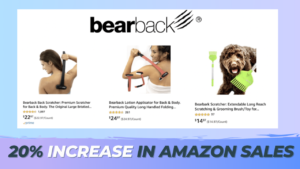Running Amazon Pay-Per-Click advertisements is a vital part of a seller’s Amazon journey. In order to maximize your conversions, you need to have an effective PPC management strategy to help you succeed in PPC campaigns. If you’re looking into starting PPC ads for your products, there’s definitely a lot to learn from expert PPC managers and Amazon Ad agencies.
Ready to start your own Pay-Per-Click campaigns? Here are 10 Amazon PPC tips that the best PPC Ad agencies are doing:
1. Take advantage of both manual and automatic campaign features
Creating manual campaigns may seem time-consuming. However, the great thing about manual campaigns is that they allow you to manually define different bid rates for keywords of different conversion rates. This basically means that low converting keywords can be bid at a lower rate, and high converting keywords can be bid higher and may be optimized for high targeting. done for you amazon
While opting for manual gives you the most control over your campaign, testing with automatic targeting can help you with several things. PPC experts run auto campaigns to help them to get to know their audience and use that information for keyword research. For instance, after a few days of running an automated campaign, you can harvest relevant keywords from the search terms reports and later add them to your manual campaign.
2. Organize your campaigns
You shouldn’t be spending more than you should on clicks. An organized campaign structure is an important key to cost-effective and successful campaigns. Running disorganized, overlapping campaigns would also mean running the risk of losing money from unqualified clicks from ads because of irrelevant keywords like you can see from ecommerce SEO services
Structured campaigns will affect how many ads display at one time, and will also enable you to better manage your keywords, thereby gaining greater insight into consumer shopping and buying behavior. Staying organized will not only help you manage your campaigns more efficiently but also make it less confusing for you and your team.
3. Have similar products in the same ad group
One of the best ways to organize campaigns is by grouping products with related keywords. You can organize your PPC campaigns by category, brand, and sales (ex: top-selling products).
However, it is important to keep in mind that products within the same group can’t always have the same bids since they may have different product margins. So it’s always a good idea to allocate your bids strategically according to performance and profit margin.
4. Utilize the different ad types
Amazon features several different ad types that you can take advantage of: Sponsored Products, Sponsored Brands, Sponsored Video, and Sponsored Display. Expand your brand visibility, reach shoppers who are intently looking for products related to theirs and land potential customers to your storefront by utilizing all 3 types of ads.
Sponsored Products are keyword-and ASIN-targeted ads similar to Google Adwords. As the most popular ad type on Amazon, this feature enables you to promote individual products within Amazon’s search results and on product detail pages.
Sponsored Display ads can boost your product visibility to your target audience, target relevant product categories on Amazon, and utilize targeting refinement on attributes like category, brand, price, and Prime eligibility. Product targeting is a great strategy to grow your customer base, cross-sell to potential customers, and upsell to your loyal customers.
Sponsored Brands appear as banner ads that display your brand logo, custom tag line, and multiple products, typically at the top of Amazon search results and product detail pages.
5. Create sponsored video ads
When it comes to establishing an initial understanding (or first impression) of your brand among customers, videos do it faster. Sponsored video ads help you establish an initial understanding (or first impression) of your brand among customers through sponsored video campaigns tailored to your brand image and value. Video ads are different from your standard Sponsored Products ads because they allow you to easily share your brand story and Unique Selling Points (USP) to your target audience.
6. Create focused campaigns for the best-performing products
7. Ensure your target keywords are in your product listings
Considering the fact that Amazon is a search engine, it is imperative to use keywords that are relevant to your listing. Like other huge search engines, Amazon relies on its algorithm to provide the best user experience possible by showing ads and results that are relevant to each user search.
So if your goal is to have your ads show up to your target audience, then prove to Amazon that your product listings are relevant to your ads. To do this, you have to add our target keywords where they make sense in your product listings.
But before you start stuffing your listing with every possible keyword, remember that added keywords should be strategic to the algorithm and to the readability of your listing to potential customers. Irrelevant keywords can lead to your listing being flagged for spam and ultimately affects your listing’s readability, making it difficult for shoppers to understand what your product is all about.
8. Bid on Long-tail Keywords
Long-tail keywords are keyword phrases that usually consist of three or more keywords put together. These phrases are specific, making them longer and more detailed for search terms. They make it more likely for your product to show up because there should be less competition for those keywords. Users who know what they want to buy are more specific with their searches, and therefore will be more likely to convert.
Many sellers make a mistake by targeting high-volume keywords right off the bat. This type of PPC strategy is usually a huge risk factor for your advertising budget. So if you are new to PPC, it’s much safer to take a different approach.
Instead of bidding high-volume keywords, most PPC experts target long-tail keywords. Longtail keywords are a huge PPC opportunity since there is less competition and the cost per click is lower. This strategy helps a lot in keeping your ACoS under control. And again, make sure that these keywords match your product.
9. Always Ahead of the Game
While launching on Amazon was relatively easy just a few years ago, it now takes a lot more than just strategy, creativity, and even experience to become successful. It is the combination of all these that get you your best chances in the Amazon market.
Most sellers would only focus on improving post-click conversion rates and increasing revenue per conversion. However, the real bulk of the process lies in continuously optimizing and improving campaign performances over time. This includes harvesting keywords from the search terms reports and adding them to your own campaign, increasing the number of keywords that can potentially draw sales.
10. Never stop learning
There is definitely no shortcut to success when it comes to selling on Amazon. Pay-Per-Click advertising is just one of the many aspects you need in building a brand that converts online. You have to consistently be proactive about your PPC campaigns and constantly optimize them.
The truth is Amazon PPC advertising is demanding. It takes time and is costly. But it works…eventually. Having a good product, a compelling SEO listing and a significant budget combined with a rigorous testing method is the key to a successful PPC journey.
One of the most common reasons why sellers fail at Amazon PPC Agency is because they’re looking for the fastest and easiest way to get their products to become profitable. The truth is, Amazon PPC has a lot of complexities and a lot of PPC best practices can only be realized through experience.
Got a great brand but don’t know where to start in the e-commerce game? Choosing a partner that has expertise in the area should be your first step!






